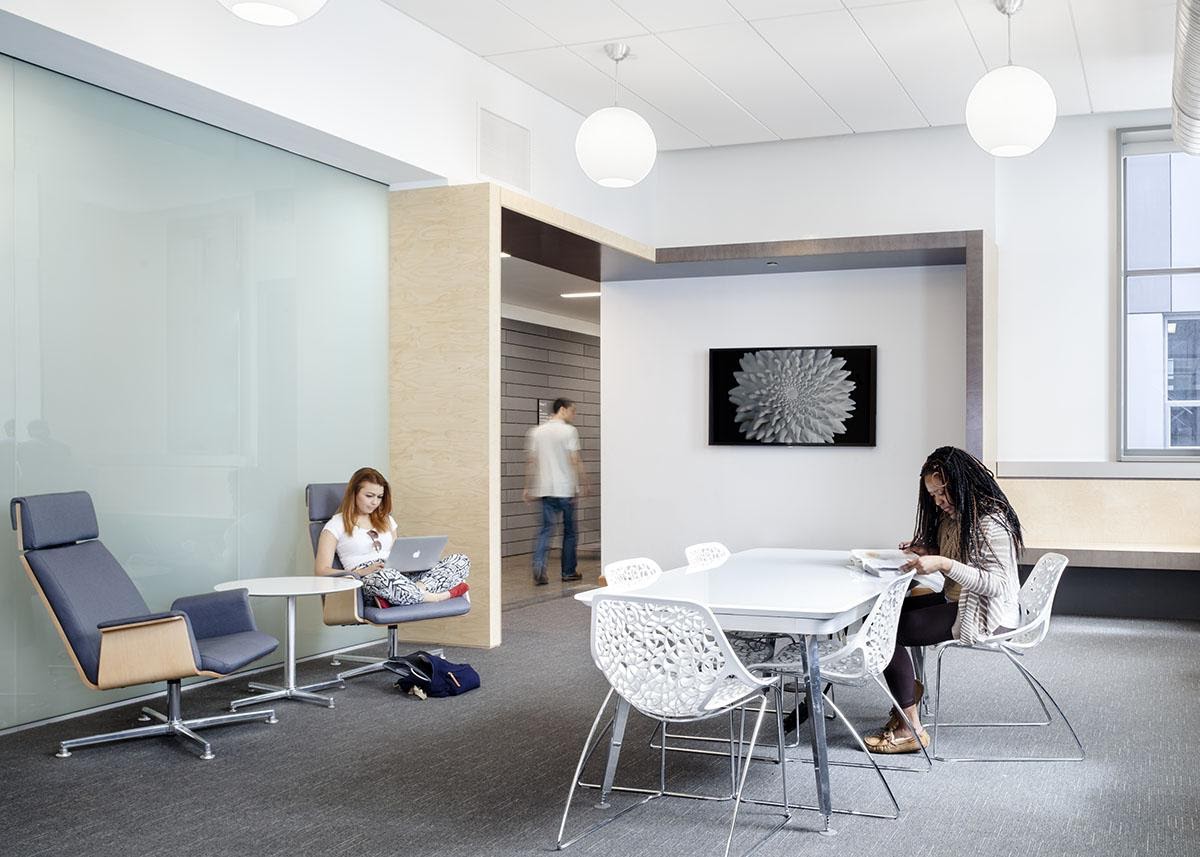This article was originally published in The Puget Sound Business Journal on March 15th, 2013. By Matt Watson, Guest Columnist

The ways we work are constantly changing, but our workspaces aren’t always keeping up.
When baby boomers stepped into the workplace, they unknowingly accepted the formulaic design of earlier generations. There was one “correct way” to configure office space. Executives were perched in their private offices around the perimeter, while associates worked in the center of the building in “Dilbert-like” cubicles. This was the status quo.
As younger generations enter the workplace, the modes in which they worked pushed functional office design into new territory. Simultaneously, technology was evolving quickly.
These two factors are the drivers of the workspace progression. Over the past five years, the square footage required for one employee has been cut by 50 percent. A portion of this space-saving can be utilized in functional and focused support spaces. The lesson: Don’t waste money by clinging to old-school planning styles.
Understanding your employees’ work modes and technology infrastructure requirements are the heart of a strategic workspace plan that leverages emerging efficiencies. Be proactive and you will be able to accommodate the needs of your current talent and the talent you wish to attract.
Choosing the right office atmosphere is critical. Throughout the life of your lease, modern planning styles can save up to a third of the workspace previously needed.
Outside and Inside
Factors that have always weighed into office relocation are commuting time, parking, amenities, public transportation, and building location. What has become more important, though, is what goes on inside the building. The lessons learned here will be valuable to companies of any size, whether it is a 10-person office or a company of hundreds. Don’t make assumptions. Observe and discover the work styles that will work for your organization.
Open Spaces
Today’s trend for workspace is an “open-plan environment.” This style is intended to promote collaboration and interaction between employees and teams. Expectations are that this work environment is more efficient.
However, this design may actually reduce productivity. Without changes in workplace culture and policies, ongoing interruptions are commonplace. We can become accustomed to chatting with team members and co-workers and/or conversing loudly with clients on the phone.
These open-plan environments can morph into distracting hangouts rather than focus-driven and productivity-driven spaces.
Work Modes
Creating a balance is the key to introducing employees to open and collaborative environments without sacrificing productivity. The first step is to understand the four primary work modes (focus, learning, collaboration, and social). Develop an understanding of how spaces should be designed to support each work mode.
- Focus requires a quiet space, free of interruptions. This area can be a shared and open environment, or it can be partitioned to shield from distractions. Employee training and workspace policies will assure the success of this space. An example: Headphones are today’s polite way of posting a “do not disturb” sign.
- Learning environments extend beyond the traditional classroom setting. It happens in everyday interactions. An open environment can connect tribal knowledge holders with future company leaders. For many, a collective learning space will still be needed.
- Collaborative spaces enable teams to work together without disrupting the workflow of others. They are easily accessible and can range from a boardroom supported by teleconference and AV technology to smaller conference rooms, called enclaves, which comfortably house groups of up to four people.
- Social spaces are places of gathering. They can be as simple as a bistro table between the coffee maker and copier. Create a comfortable environment to stimulate casual conversation. It is surprising how often this leads to critical connections, work developments, and innovation.
For an effective workspace, factor these four fundamental work modes into your workplace design and establish and enforce policies that support employee productivity.
Once you’ve designed your space, add flexibility by using office furnishings that are configurable and adaptable to changes in the work structure. This will help you create a dynamic workspace that is nimble and ready for change.
Create an environment that complements all four work modes — and you will have an office space that can evolve with the talent you have and the talent you want to attract.
Matt Watson is vice president of development at Apex Facility Resources. He can be reached at 206.391.0689 or matt@apexfacility.com.
For more information, check out our article on Workplace Productivity.



